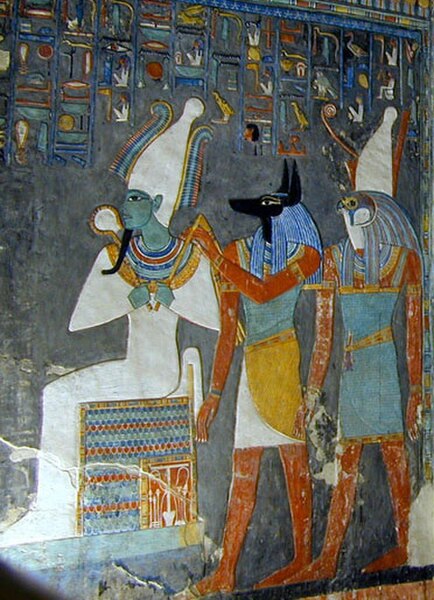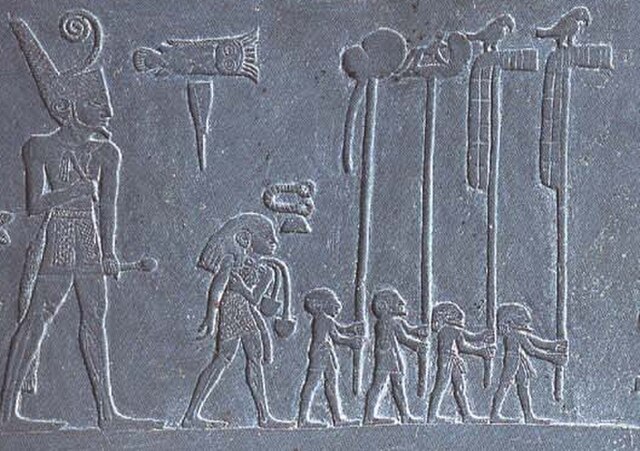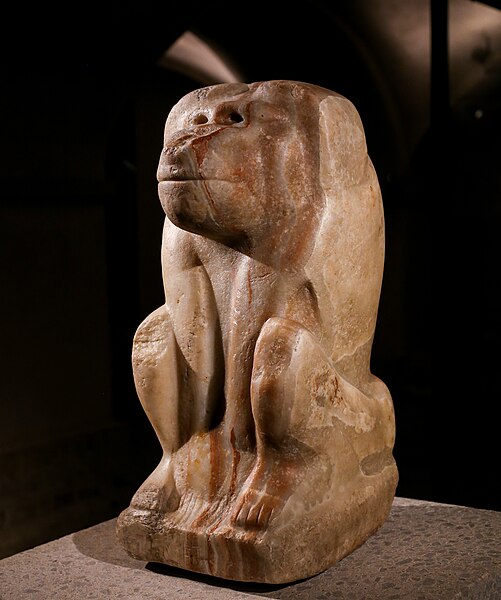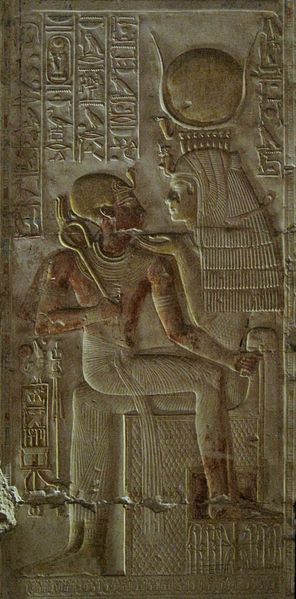Bes, together with his feminine counterpart Beset, is an ancient Egyptian deity, likely of Kushite/Nubian or Nehesi C-Group culture origin worshipped as a protector of households and, in particular, of mothers, children, and childbirth. Bes later came to be regarded as the defender of everything good and the enemy of all that is bad. According to Donald Mackenzie in 1907, Bes may have been a Middle Kingdom import from Nubia or Somalia, and his cult did not become widespread until the beginning of the New Kingdom, but more recently several Bes-like figurines have been found in deposits from the Naqada period of pre-dynastic Egypt, like the thirteen figurines found at Tell el-Farkha.
Egyptian composite capital with a Bes capital above it, in the Dendera Temple complex (Egypt)
Amulet of Bes; 1070–712 BC; faience; height: 3.7 cm; Metropolitan Museum of Art (New York City)
Bes and Beset; 664–332 BC; limestone; height: 31.7 cm, width: 22.5 cm; Louvre
Cypriot statuette of Bes; late 6th – early 5th century BC; limestone; overall: 14 × 8.3 × 7 cm; Metropolitan Museum of Art
Ancient Egyptian deities are the gods and goddesses worshipped in ancient Egypt. The beliefs and rituals surrounding these gods formed the core of ancient Egyptian religion, which emerged sometime in prehistory. Deities represented natural forces and phenomena, and the Egyptians supported and appeased them through offerings and rituals so that these forces would continue to function according to maat, or divine order. After the founding of the Egyptian state around 3100 BC, the authority to perform these tasks was controlled by the pharaoh, who claimed to be the gods' representative and managed the temples where the rituals were carried out.
The gods Osiris, Anubis, and Horus in the Tomb of Horemheb (KV57) in the Valley of the Kings
Narmer, a Predynastic ruler, accompanied by men carrying the standards of various local gods
Statue of the baboon god Hedj-Wer, inscribed with the name of king Narmer
Isis, a mother goddess and a patroness of kingship, holds Pharaoh Seti I in her lap.








